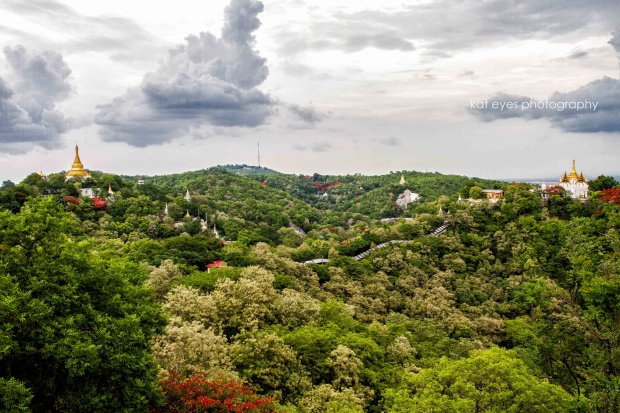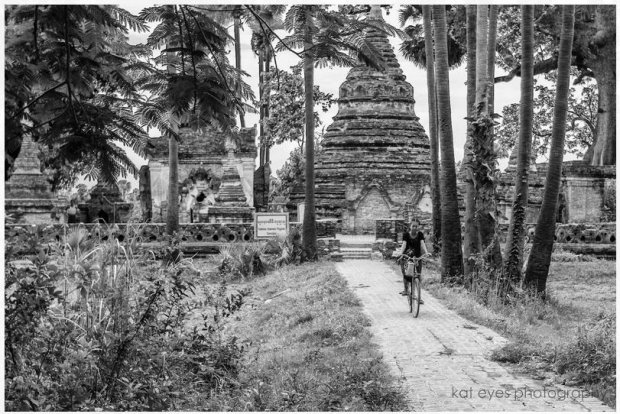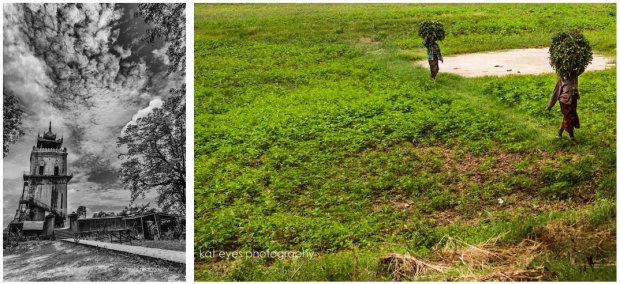TripZilla Magazine is proud to be invited on board SilkAir’s inaugural flight from Singapore to Mandalay, Myanmar. Follow TripZilla Magazine Writer, Kat Goh, as she gets lost in the charms of Mandalay, Myanmar!
*
She made Rudyard Kipling pine for her and pen a poem of her. The beauty who had enthralled one of the greatest writers of the 20th century is none other than Mandalay, the last royal capital of Myanmar (formerly known as Burma).
Romanticised by Kipling in his poem ‘Mandalay’, the city has long been a symbol of mystique and exoticism of the Far East. For decades, she has been isolated from the outside world, her unsullied beauty hidden away. When I set foot on the city recently, I saw for myself why Mandalay had been a source of inspiration to many writers as she unveiled her charm, petal by petal.
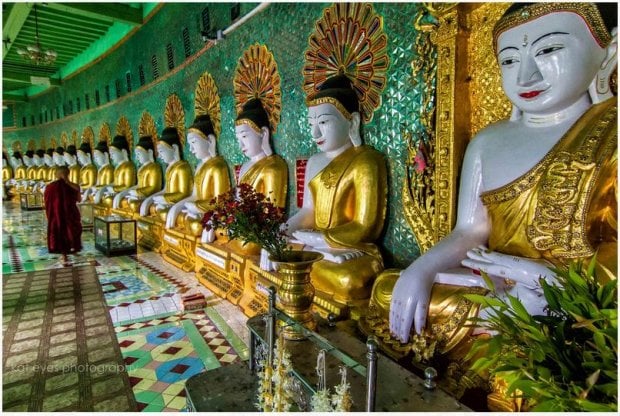
Shwenandaw Monastery
Shwenandaw Monastery, which means Golden Palace Monastery, is a beautiful teak wood monastery. It used to be part of the Amarapura Royal Palace built by King Mindon in the mid 19th century. In a city of golden pagodas and temples aplenty, Shwenandaw Monastery stood out for the very reason that it is made of teak.
Also read: Baring My Soles in Bagan, Myanmar
King Mindon passed away in this structure in 1878, and King Mindon’s son, King Thibaw, used it for meditation purposes after he succeeded the throne. However, King Thibaw subsequently ordered for the structure to be dismantled and relocated from Amarapura to Mandalay when he believed his father’s spirit was haunting it. It was reconstructed as a monastery and dedicated as a work of merit in memory of King Mindon.
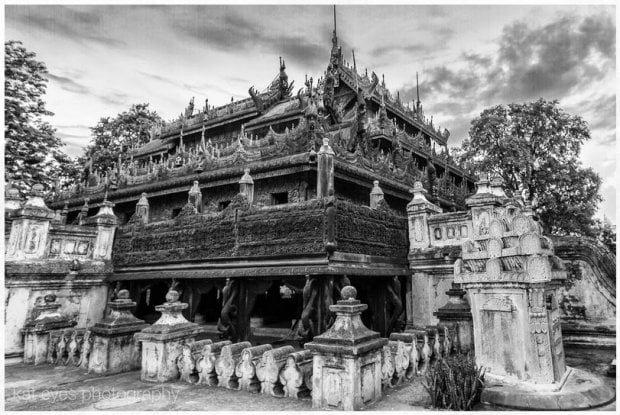
No longer used as a monastery, Shwenandaw Monastery serves as the only fragile remnant of the Royal Palace today. The rest of the palace was destroyed during World War II. Originally gilded, the monastery has lost all of its lavished façade but the remaining gold interior and intricate carvings hint at the former grandeur of the historic structure.
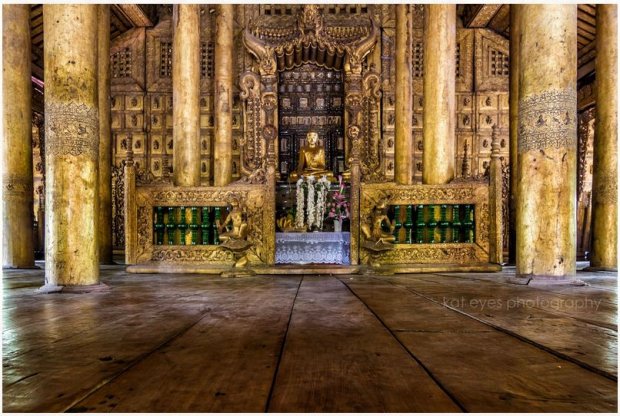

Mahamuni Pagoda
Everyday, a ceaseless flow of devotees thronged a temple to make offerings to one of the most revered Buddha figures in the country – the Mahamuni Buddha. At a height of 3.8 metres, the Mahamuni Buddha is housed at the Mahamuni Pagoda, which is the second most religious site in Myanmar, and believed to be made 2,500 years ago.
The Mahamuni Buddha is covered in a thick layer of gold leaves, meticulously applied on by faithful devotees in the hope of gaining wealth in their future lives. The gold leaves can be bought at the temple at 300 kyat (about USD 0.30) for a small sheet and 700 kyat (USD 0.70) for a large one. Some devotees even put jewellery on the statue for good luck and divine blessings.
When our local guide, Aung, told us that females are not allowed to go near the statue, I was appalled. He looked slightly amused as my fellow female travel companions and I widened our eyes (and our mouths) in disbelief. He explained the rule had been set by the temple’s committee. The females in our group watched in dismay and with envy whilst the guys in our group entered the chamber of the statue for a closer look. It was also then that I realised why so many female devotees sat outside the chamber to pray.

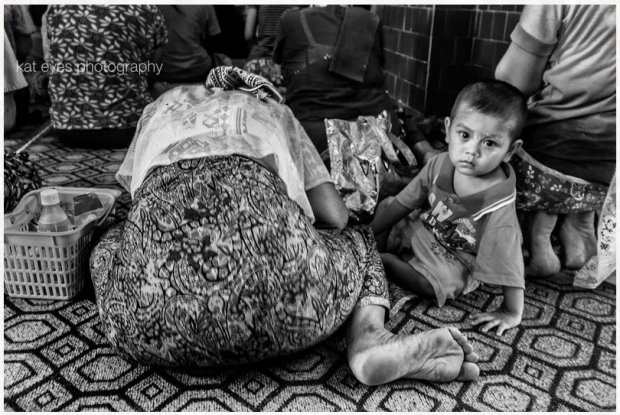
Mandalay Hill
Legend has it that Buddha once stood on top of Mandalay Hill and prophesied that a great city would be built at the foot of that hill. Today, a city indeed stands at the foot of that very hill and that city was named after Mandalay Hill.
Mandalay Hill is a 240-metre hill which offers a panoramic view of the city from the summit. At the top of the hill sits the Sutaungpyei (which means ‘wish fulfilling’) Pagoda. Before 1988, the only way to get to the top was to climb a flight of stairs of 1,729 steps. Subsequently, access was made easier by alternative means such as escalators, cars or small buses. I was secretly thankful we did not have to climb the stairs to the top.
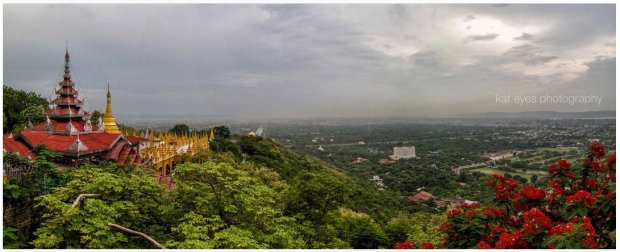
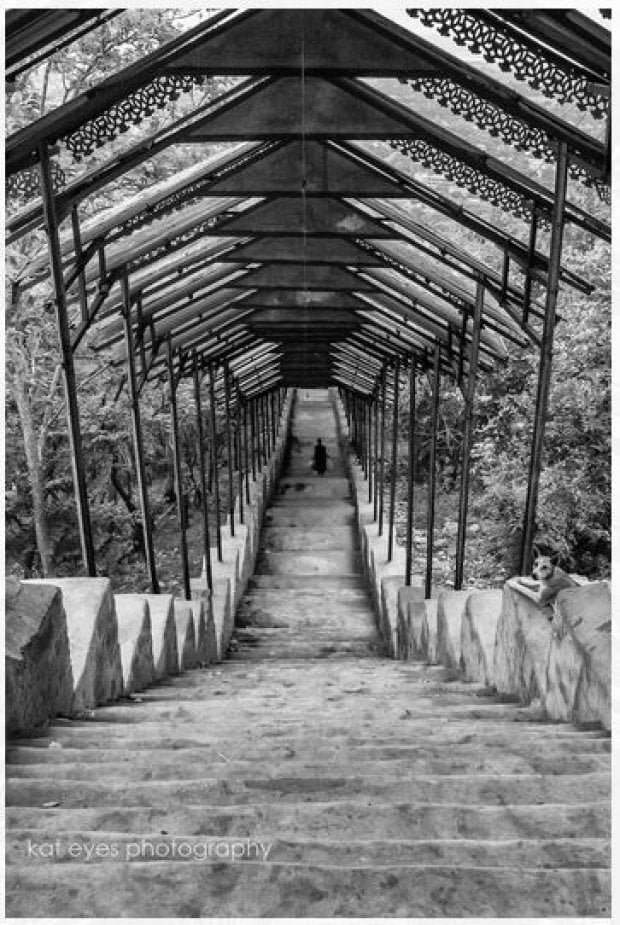
Kuthodaw Pagoda
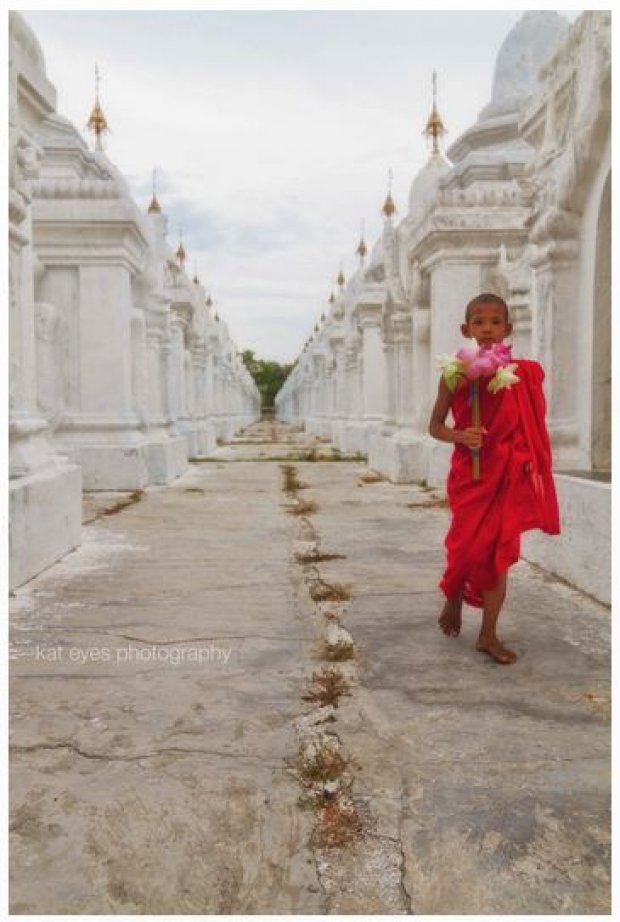
Mahagandayon Monastery
Located at Amarapura, the Mahagandayon Monastery was founded in 1914 and is one of the largest teaching monasteries in Myanmar today. Every year, thousands of men from different parts of Myanmar would travel to the monastery for religious study. At any one time, the monastery would house about 1,500 monks.
The visit to the monastery was a surreal experience. Initially, as Aung led us through the premises, I felt like I was invading the privacy of the monks. Yet, at the same time it was fascinating to see for myself how the latter went about their daily chores in the monastery. Most of the monks appeared oblivious to our presence, except for the occasional glance from a handful of them.
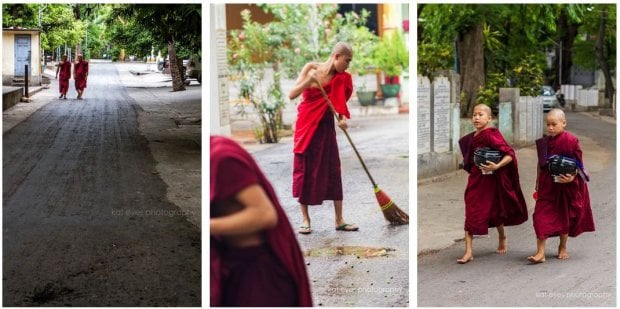
Aung told us that in Myanmar, males have to be monks at least twice in their lives. The first time would be usually around the age of seven when boys become ordained as novices. The second time would be done after the age of 20 and only those older than 20 years old can be considered monks. A Burmese man’s life is considered incomplete unless he finishes at least a week of monastic study as a monk.
The monks at Mahagandayon Monastery eat twice a day – the first at 5 am early in the morning and the second, and last, at around 11 am. I was surprised that we were able to witness the daily ritual of the monks lining up to receive their food. I was even more surprised to see many other tourists around.
Monks of all ages patiently formed a long queue at the serving station for their food. One by one, they then moved into the dining hall where they swiftly finished their last meal of the day. While I still felt intrusive to be watching the monks (and taking photographs of them like a typical tourist), I couldn’t explain why it also felt humbling at the same time.

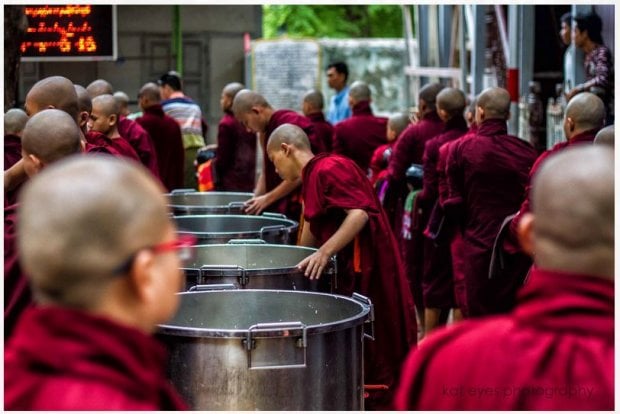
Ava
Time seemed to have stood still in Ava, located south of Mandalay. Ava was once the capital of Burma from the 14th to 18th centuries, but eventually was abandoned after a series of earthquakes destroyed the city. We took a short boat ride across to Ava, only to be greeted by a group of young local girls peddling jewellery. After making our way past the relentless girls, I was suddenly hit by the smell of dung, the sight of horses with carriages, and the realisation that we were going to ride in those carriages. I could not be more excited.
Our party separated into several groups of two for the ride. I climbed into one of the horse carts and noticed a picture of Aung San Suu Kyi proudly pasted at the driver’s seat. As the horse plodded on the bumpy dirt paths, my hands gripped the sides of the cart tightly. Peering through the swinging tassels on the cart, I waved gleefully at my fellow travel companions in the horse carts behind my driver’s. Like a child taking her first rollercoaster ride, I was thrilled to bits.
The horse carts took us passing by ancient ruins, idyllic villages and paddy fields to our eventual destination, Bagaya Monastery. When the ride ended, I couldn’t help but feel a bit sad that I had to return to reality.
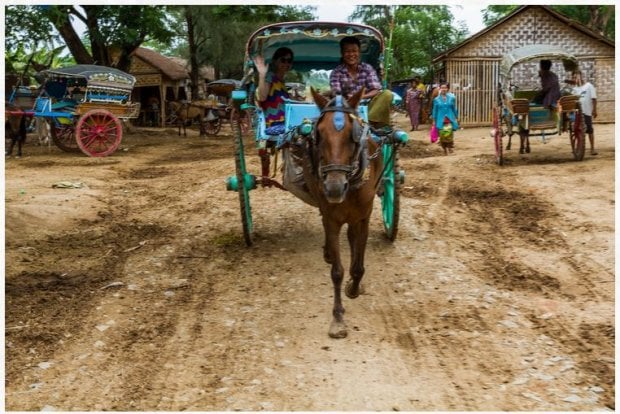
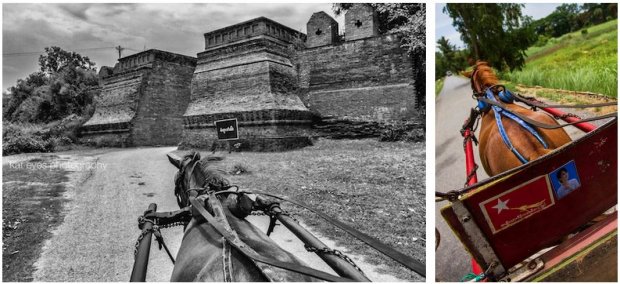
The trip to Mandalay was made possible by SilkAir, the regional wing of Singapore Airlines.
How to Get There: SilkAir flies three times a week to Mandalay from Singapore.
Also read: SilkAir – First Premium Carrier to Connect Singapore and Boracay
Where to Stay: Sedona Hotel Mandalay. No. 1 Junction of 26th and 66th Street, Mandalay, Myanmar.
